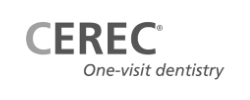Did you receive less than raving reviews at your last dental appointment? Sometimes without even realizing it you could be developing bad habits when it comes to brushing. If your teeth are not getting as clean as you would like or if you are coming up with cavities at your dental checkups you may be making some toothbrush mistakes. For optimal brushing, consider the following things when brushing your pearly whites.
Find the right toothbrush. More often than not, people are using the wrong toothbrush for their mouth. Make sure the toothbrush you’re using is not too big for your mouth and that it fits comfortably in your hand. If you find a toothbrush that fits your mouth and hand, you are more likely to brush properly. Toothbrushes have different types of bristles, from angled to straight. Bristles are also rated by stiffness. The American Dental Association recommends using a soft bristled toothbrush.
Brushing twice a day is what is recommended, but three times is best. Where most people fall short when it comes to brushing is how long they brush. The American Dental Association recommends brushing for two full minutes. It’s a good idea to split your mouth into quadrants and spend 30 seconds on each quadrant, 15 seconds on the inside of the teeth and 15 seconds on the outside.
On the flip side, brushing too often or too rigorously is not good either. Brushing too many times a day can expose the roots of your teeth to irritation and if you brush too hard you can damage the tooth enamel that covers and protects your teeth. If you brush with long horizontal strokes along the gum line you could get gum abrasions. It’s best to hold the brush at a 45 degree angle and do short strokes. Brushing up and down or circular is recommended – not side to side.
Try changing up where you start brushing every once in a while. People tend to brush in the same pattern, and usually concentrate on the same areas, while ignoring other areas. Don’t forget to concentrate on the inner teeth surfaces as well as the exterior. Be sure to rinse and dry your toothbrush after each use to remove bacteria. Finally, be sure to replace your toothbrush when your bristles start to bend, become misshapen or lose their normal flexibility.














